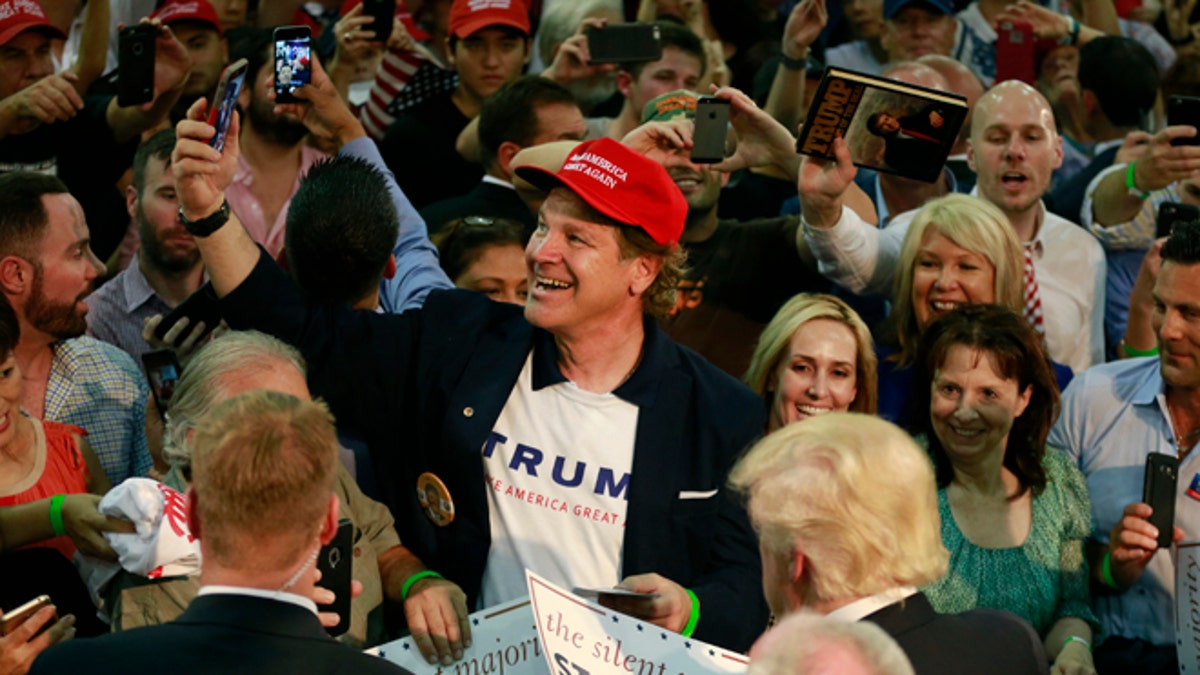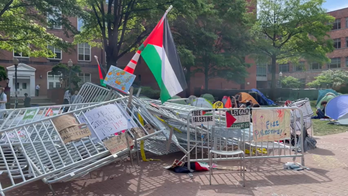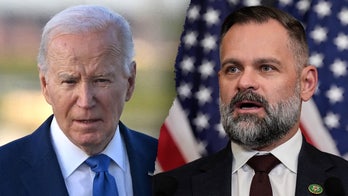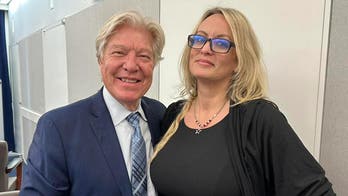
A Donald Trump rally on Thursday, June 2, 2016, in San Jose, Calif. (ap)
In what has become a common scene at Donald Trump’s rallies throughout California, over the weekend a group of mostly Latino protesters clashed with predominately white supporters of the presumptive Republican nominee as they were leaving an event in San Jose.
Fists were thrown, taillights smashed and at least one Trump supporter was hit with an egg hurled from the crowd.
The scene in San Jose, along with similar ones that have played out in Anaheim and earlier this year in Arizona, have put the spotlight on the anger many Latinos in the United States feel for Trump and his rhetoric on immigration.
While the anti-Trump fervor among Latinos has been a major talking point among pundits and political analysts, the furor on the other side is just as rampant, as the billionaire businessman plays to the concerns of some in the white electorate who feel increasingly marginalized both economically and politically in a diversifying America.
“He’s expressing some of the dissatisfaction that they’ve felt for the last 20 years,” Louis DeSipio, a political science professor at the University of California – Irvine, told Fox News Latino.
Polls show that immigration is the most important issue to 57 percent of Trump followers and that 52 percent of the real estate mogul’s supporters believe undocumented immigrants working in the U.S. should be deported.
But what the protests – and Trump’s popularity – is showing is that as the Hispanic population in California and elsewhere in the country grows, so does the resentment against them.
“There are so many tradesmen who have lost their jobs to people in this country illegally,” said Robin Hvidston, executive director of We the People Rising, a California-based group that opposes illegal immigration. “American workers are out of work because they’re being replaced by foreign workers. Donald Trump addresses these things and the other candidates don’t.”
And while even Republicans have called Trump’s comments about minorities indefensible, there is no doubt he has tapped into an electorate that has grown frustrated with foreigners who they claim are taking their jobs.
“He’s speaking to the growing concerns of a sector of American society,” DeSipio said. “And an easy target is newcomers, which Trump knew when he made his comments on immigration.”
Trump’s language – promising to shut down mosques, keep a database of Muslims and round up undocumented immigrants – is playing into the fears of many white voters who feel like they don’t have a voice in a rapidly diversifying United States.
“We’re seeing this effect on people who feel disenfranchised by the economy,” Mike Madrid, GOP political consultant with GrassrootsLab and an expert on Hispanic voter behavior, told FNL. “It’s racial conflict and both sides are carefully energizing their bases along racial lines.”
As an example, Madrid pointed to the clashes between American flag waving pro-Trump supporters and anti-Trump protestors carrying Mexican flags at the presumptive Republican nominee’s rallies throughout California.
“The protests are much more violent and much more nationalistic than we have seen before,” he added.
Despite Trump’s appeal among working class voters in the Rust Belt and in Appalachia, most analysts seem to agree that when it comes to winning California in the general election Trump has a tough fight.
The Golden State has for years traditionally gone Democrat and with Latinos now outnumbering whites in California, it appears to be a long shot even if Trump can claim the state’s conservative hotbeds like Orange County and the Central Valley.
“He says that he can win California, but I am dubious of that,” DeSipio said. “It would be an incredible turnaround if he can make California competitive in November. If Trump is going to do that he has to convince a lot of people on the fence that he is a natural leader.”




